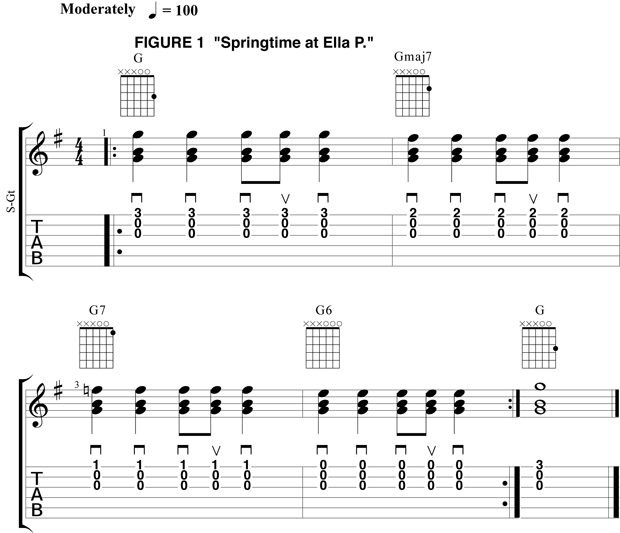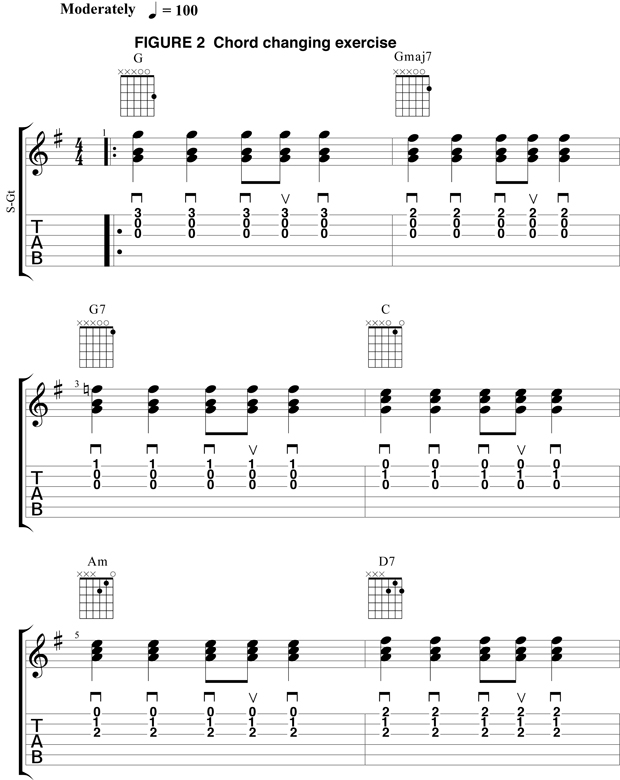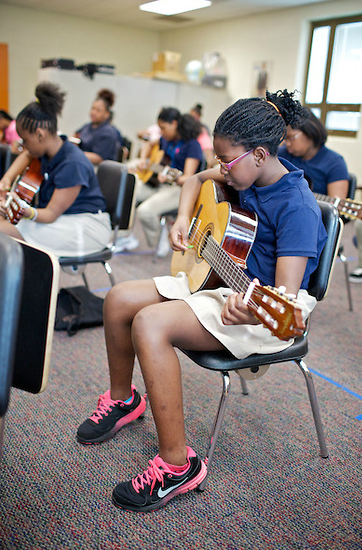VH1 Save the Music: An Effective Strategy for Teaching Young Beginners the Joy of Playing Guitar

Hello. My name is Ted Meyers, and I teach guitar classes at the Ella P. Stewart Academy for Girls Elementary School in Toledo, Ohio.
Being assigned the ongoing mission of teaching a new crop of middle school students each year to play guitar on a beginner level in a group setting, I’ve had numerous opportunities to try various approaches to getting the kids to focus on learning to play the instrument without becoming bored or frustrated.
I’ve found that the best way to accomplish this is to show them how to play things that sound musically satisfying but don’t require much in the way of technique.
These criteria are important because, as I’ve learned, when you’re dealing with young teenagers, you need to hold their attention and give them just enough of a challenge that the task at hand will be realistic and won’t end up discouraging them.
One strategy I’ve found to be particularly effective is to get the students strumming chords right away, as opposed to the conventional guitar method book approach of introducing simple single-note melodies that don’t sound very inspiring or “cool” on their own.
What I’ll do is teach them some simple chord progressions — meaning chords played in a particular order — that convey a sense of musical purpose and forward motion and sound like something you would hear in a real song, as opposed to just introducing a handful of random chords.
This tactic helps captivate the students and keep them focused. I will also, at least initially, limit the chords to only the top three strings (the G, B and high E) and stay in first position, using a combination of open strings and fretted notes. This makes things easy on the fingers while also capitalizing on the superior, full-sounding tone of the open strings and notes played in the lowest positions (within the first few frets).
All the latest guitar news, interviews, lessons, reviews, deals and more, direct to your inbox!
FIGURE 1 is a little chord-playing etude I came up with — an etude is a musical exercise that sounds like a mini-composition — to get the kids started (after we’ve tuned up, of course). It consists of four easily fingered chords: G, Gmaj7, G7 and an all-open G6. Using only the top three strings like this — instead of six, five or even four strings — allows the students to better hear and focus on the individual notes that comprise each chord voicing and how they relate to each other and sound together (like listening to a three-part vocal harmony).

The first thing I advise them to do, to help insure a good, clean sound when fretting, is to pre-position the ring, middle and index fingers on the high E string at the third, second and first frets, respectively. By doing this, they can then “peel off” the fingers one a time to reveal the next chord in the progression.
I find that doing this helps beginners due to their lack of finger strength and calluses, which both develop over time with consistent practice. I point out to them that if the chords do not sound clear, they may need to press down a little more firmly, or the fretting finger on the high E string is not centered properly between the fret bars, in which case, they’ll need to “scoot” the finger a little to their right, closer to the fret.
Regarding the strumming, I find that it’s good to get the students used to playing a combination of quarter notes and eighth notes early on, as you would typically encounter in a popular or folk song, and teaching them how to count beats.
Consecutive downstrokes are used for the quarter notes, and a downstroke-upstroke combination is employed for any pair of eighth notes, which in FIGURE 1 fall on beat three in each bar, except the last. So the counting for the first four bars is “1 2 3-an 4, 1 2 3-an 4,” etc.
Once the students have mastered this little progression, I then present to them the option of playing the chords in reverse order, which becomes a fun challenge and gives them a greater opportunity to hear and compare the sound of each chord.
FIGURE 2 expands on this little progression and introduces a few new chords, for which notes are fretted on the B and G strings, as well as the high E. When playing these chords, it’s very important that the fretting fingers “stand tall” and don’t inadvertently touch or “slouch” and lean against the neighboring strings.
It’s a good idea to teach the students to “test out” each chord to make sure they’re fingering it cleanly by picking the notes one at a time. This will reveal any “dead” notes in the chord and fingering adjustments that need to be made.


I hope that, as a teacher, you too will have success using this approach with your beginner students. Try coming up with similarly satisfying and easy-to-play chord progressions of your own design, gradually introducing more challenging elements as your students progress.
Photo: Rob Davidson
For more about Ted Meyers, head to meyersmusic22012. Check out the photo gallery of Meyers with his students below!
The VH1 Save The Music Foundation is a nonprofit organization dedicated to restoring instrumental music education programs in America¹s public schools, and raising awareness about the importance of music as part of each child¹s complete education. Get involved at vh1savethemusic.org.

















